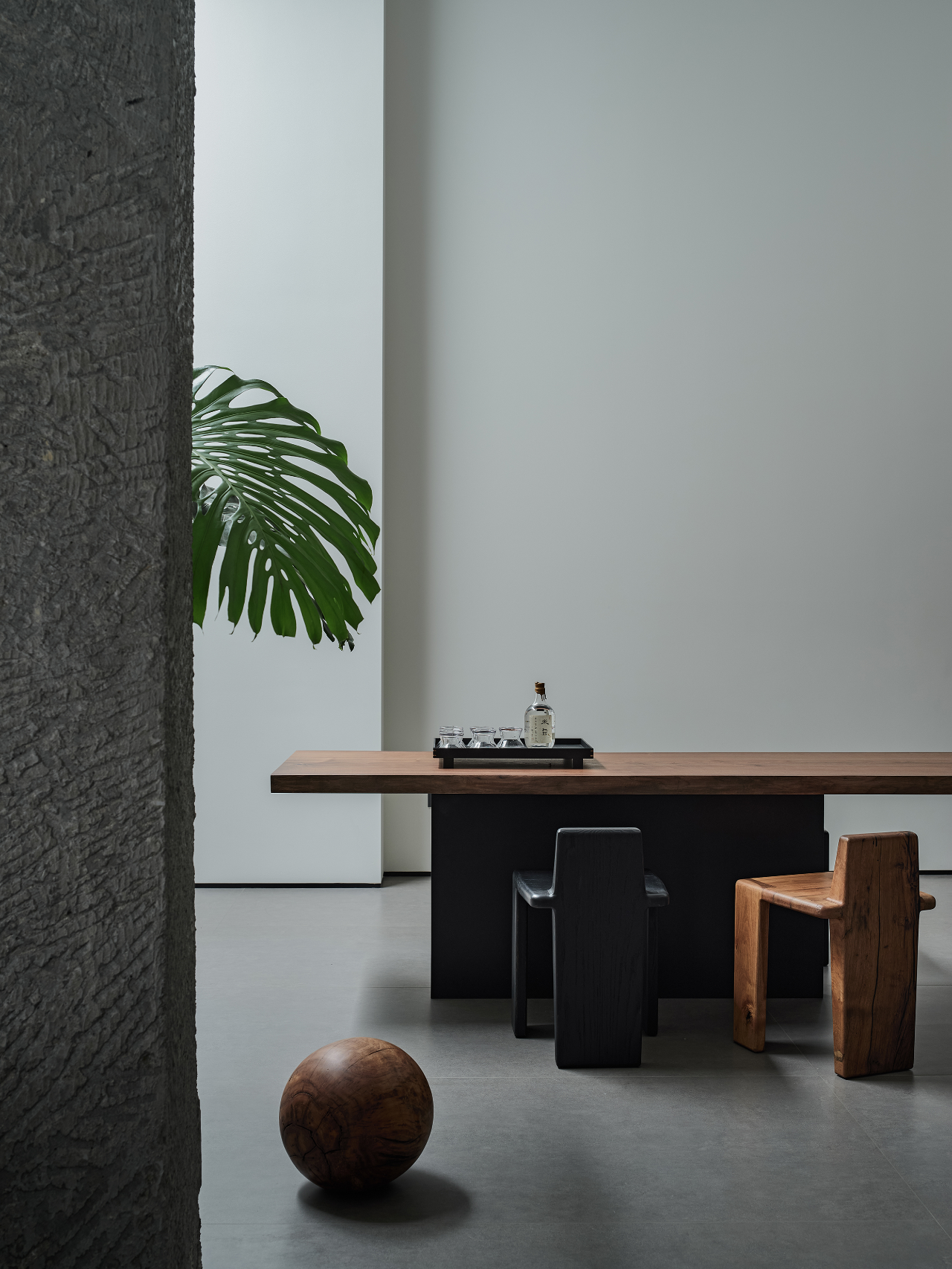Ban House Zhang Dongguang + Liu Wenjuan
2014-08-31 01:00
架构师提供的文本描述。随着反城市化的趋势,越来越多的城市居民打算在他们的家乡建造房屋,目的是为了职业或退休。这个项目是为住在大都会的一对年轻夫妇设计的度假屋,他们想要有广阔的朋友空间和大家庭聚会的空间。
Text description provided by the architects. Along with the trend of counter-urbanization, a growing number of city-dwellers intend to build houses in their home villages for the purpose of vocation or retirement. This project is a vocation house designed for a young couple living in the metropolis, who wanted big space for friends and big family gathering.
© Liu Wenjuan
刘文娟


该遗址位于陕西关中地区。坐落在乡土民居的后院,新结构的密集性和规模遵循了村庄现有的城市结构;在现有的主楼后面创造了一个更加内向和亲密的开放空间。倾斜到庭院的单螺距屋顶的设计是从当地传统的继承而来的,当地传统打算在庭院内收集雨水。
The site is in the Guanzhong area of Shaanxi. Sited at the back yard of a vernacular dwelling, the massing and the scale of the new structure follows the existing urban fabric of the village; creates a more introversive and intimate open space behind the existing main house. The design of single-pitch roof sloped down to the courtyard was inherited from the local tradition which intend to collect rainwater in the inner courtyards.
© Liu Wenjuan
刘文娟


房子通过材料进一步整合到现场。它保留了现有的红砖庭院墙作为新房子墙壁的一部分,并在这些墙壁的顶部添加了使用灰色砖,以区分新旧。
The house further integrates into the site through its materials. It preserves the existing red brick courtyard walls as part of the walls of the new house, and adds pediments on top of those walls using grey colored bricks, to differentiate between old and new.
室内空间由深木桁架分为底层和阁楼两层。一楼被安排与传统的三湾风格区分开来。它被一个连续的木架分割成两个线性空间-一个大的主要生活空间和一个阁楼下狭窄的服务空间。
The interior space is divided into two levels, the ground floor and the attic, by the deep wood trusses. The ground floor was arranged to be distinguished from the conventional three-bay style. It was sliced into two linear spaces by a continuous wooden shelf - one large main living space and one narrow service space under the attic.
© Liu Wenjuan
刘文娟


架子的开口响应于外墙的窗户,导致服务空间与主要生活空间以及内部和外部之间的有趣关系。上阁楼的空间被悬挂在天花板上的隔断隔开。它的特点是以木材为基础的皮肤,相比之下,白色干墙完成的底层。二饰面设计也符合外墙的材料分布-下部和上部。
The openings of the shelf respond to windows of outer walls; resulting intriguing relationships between the service space and the main living space, as well as the interior and the exterior. The space of upper attic was divided by the partition that hanged from the ceiling. It was characterized by wood-based skin, in contrast to the white drywall finish of the ground floor. The 2-finishes design also conforms to the material distribution of the exterior walls - lower part and upper part.
© Liu Wenjuan
刘文娟


半木结构体系的应用,使建筑能够在狭小而有限的院子里展开。同时,为信封的设计提供了很大的灵活性。空腔墙不仅提供了更好的热性能,而且还创造了一个有趣的高窗户砖图案。此外,增加的桁架高度提供了一个很大的空间跨度,木基受力的桁架加强了抗侧力的能力。
Applying of Half-timber Frame System enabled the construction to be unfolded in the narrow and limited yard. Meanwhile, it provided much flexibility in the envelope design. The cavity wall not only provides a better thermal performance, but also creates an interesting brick pattern with high windows. Moreover, the increased truss height provides a wide span of space; and the wood-based stressed skin of the trusses strengthens the resistance to lateral force.
© Liu Wenjuan
刘文娟


总之,该项目对当地的生活方式和建筑习俗表现出了高度的尊重,打破了传统结构体系和空间格局的局限。建筑师利用复合建筑体系,改进当地建筑技术,创造了独特的空间体验,满足了现代生活的高水平,同时也给当地村民带来了一种既新鲜又熟悉的复杂感觉。
To summarize, the project shows high respects to the local lifestyle and construction conventions; and break the limitation of the traditional structure systems and space patterns. By utilizing composite construction system and improving local building techniques, the architects created a unique spatial experience to satisfy the high standard of modern life, which also brought a complex feeling of both freshness and familiarity to the local villagers.














































Architects Zhang Dongguang, Liu Wenjuan
Location Weinan, China
Category Extension
Area 80.0 sqm
Project Year 2013
Photographs Liu Wenjuan
























